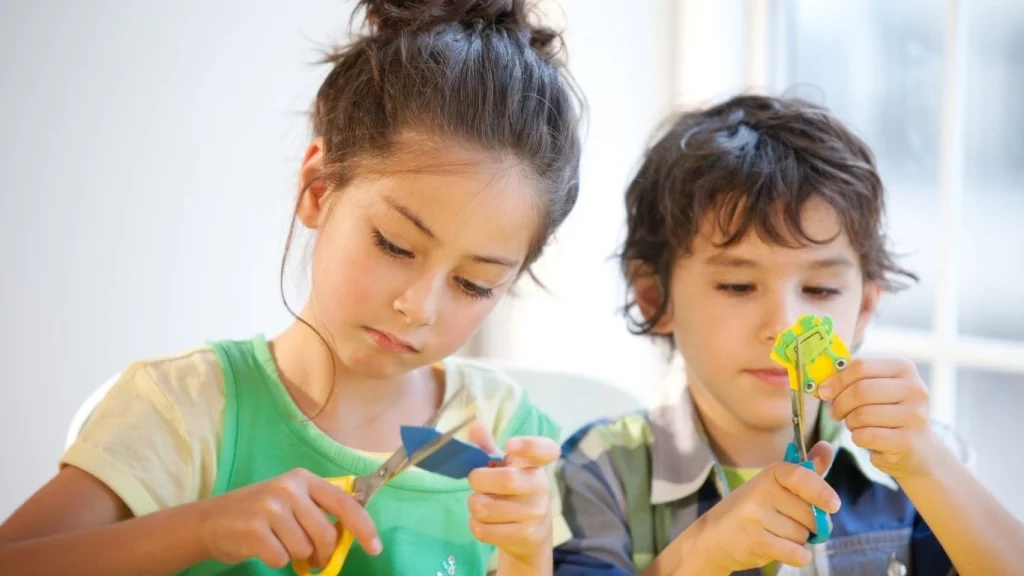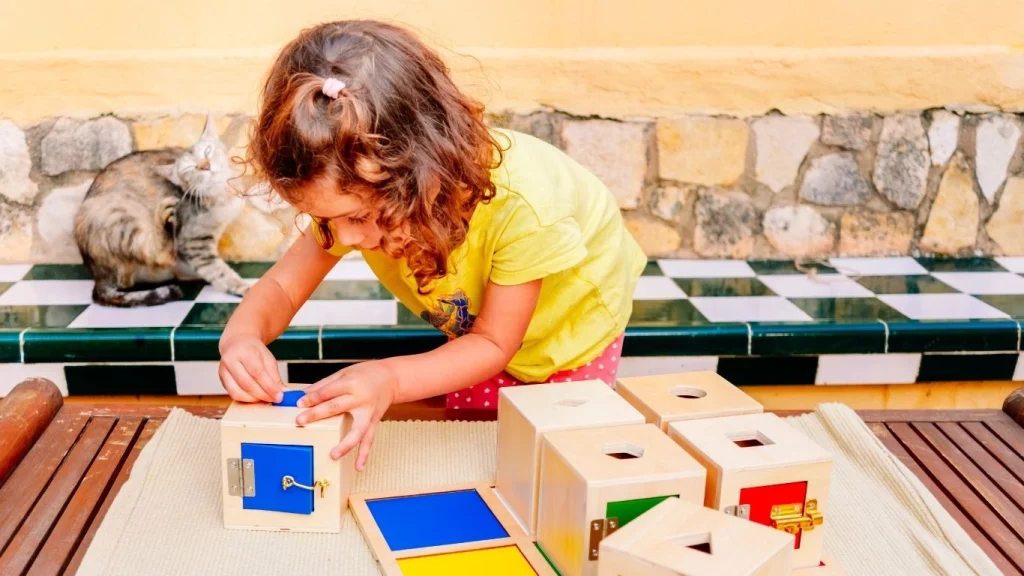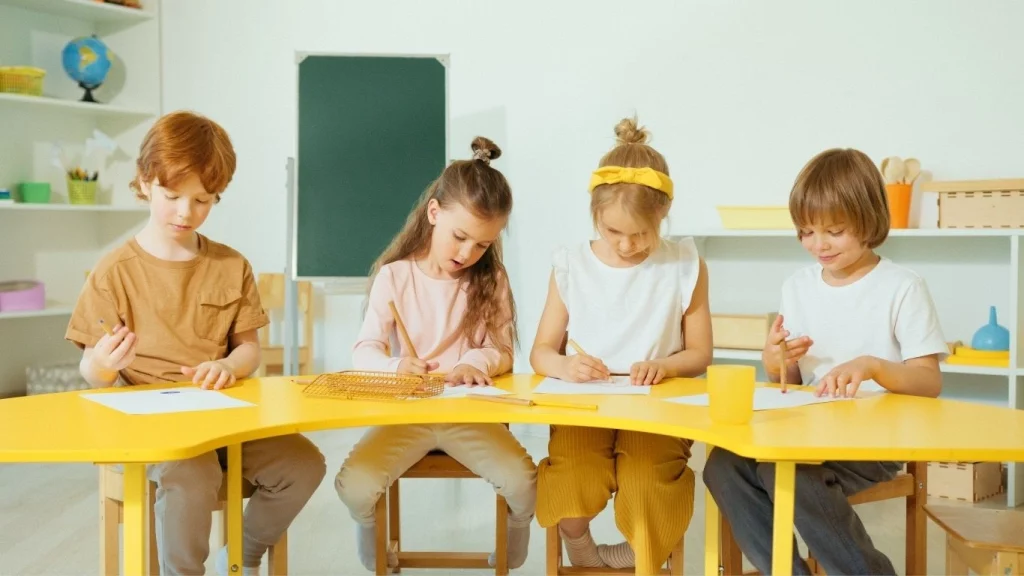WHAT DOES ART LOOK LIKE IN THE MONTESSORI CLASSROOM?

Your child is a unique individual with their own pace, preferences, and passions. That’s why choosing the right educational environment is one of the most important decisions you’ll make. With so many schools and learning approaches to explore, Montessori stands out as a philosophy that honors individuality and fosters holistic growth.
A key element of the Montessori experience is creative expression through art. But art in this environment isn’t just about finger painting or drawing inside the lines, it’s about curiosity, discovery, and developing lifelong skills through hands-on exploration.
Understanding the types of art experiences your child engages in can help you better support their creativity both in and out of the classroom. Here’s what art looks like in a Montessori setting, and how you can carry that inspiration into your home.

Freedom to Choose
In a Montessori classroom, children aren’t directed to color within the lines, copy a model drawing, or all make the same craft. Instead of structured, teacher-led projects, Montessori art is about freedom of choice and exploration.
Educators carefully prepare the environment, offering a variety of open-ended materials that children can access independently. The child might choose from colored pencils, paints, clay, or collage items arranged on accessible trays or low shelves. This setup invites students to follow their interests and make decisions about what to create and how to create it.
This child-led approach fosters independence, decision-making, and creative confidence, all while encouraging spontaneity and originality.
A World of Open-Ended Materials
Montessori art materials are typically open-ended, meaning there is no “right” or “wrong” way to use them. These tools encourage experimentation and support the idea that creativity comes from the process, not the product.
Children may find:
- Trays of vibrant paints with brushes and rollers of different sizes
- Crayons, markers, or chalk for abstract drawing and line work
- Tissue paper, glue sticks, and scissors for freeform collages
- Modeling clay for sensory sculpting and texture exploration
They might mix colors, layer materials, roll, stamp, or even finger-paint to discover new techniques. What’s important isn’t what they make, but that they are given the space, time, and freedom to express themselves.
Trays and shelves are intentionally organized to look beautiful and inviting, which nurtures a child’s sense of order and care for their environment, two key Montessori values.

Creativity Without Expectation
In Montessori, art is not about creating something perfect to display, although parents are welcome to cherish their child’s work. Instead, the focus is on the joy of the creative process.
Children create because they want to, not to fulfill an assignment or please an adult. As a result, they build inner motivation and pride in their own efforts.
Parents and educators are encouraged to take a hands-off approach: stand back, observe, and let your child explore their ideas in their own way. This helps cultivate true creativity, self-expression, and confidence.
Bringing Montessori Art Home
You don’t need a classroom to support Montessori-style art. At home, you can offer simple materials like crayons, paper, paint, clay, or fabric scraps and let your child lead the way. Avoid giving step-by-step instructions or setting expectations for the outcome; just let your child create freely.


Inspired to Learn More?
At Joyous Montessori, Keller, TX, we believe in nurturing the whole child, creatively, intellectually, emotionally, and socially. If you’re curious about how a Montessori education can benefit your child, we’d love to talk.
Visit us or contact us today to learn more about our programs and philosophy.
